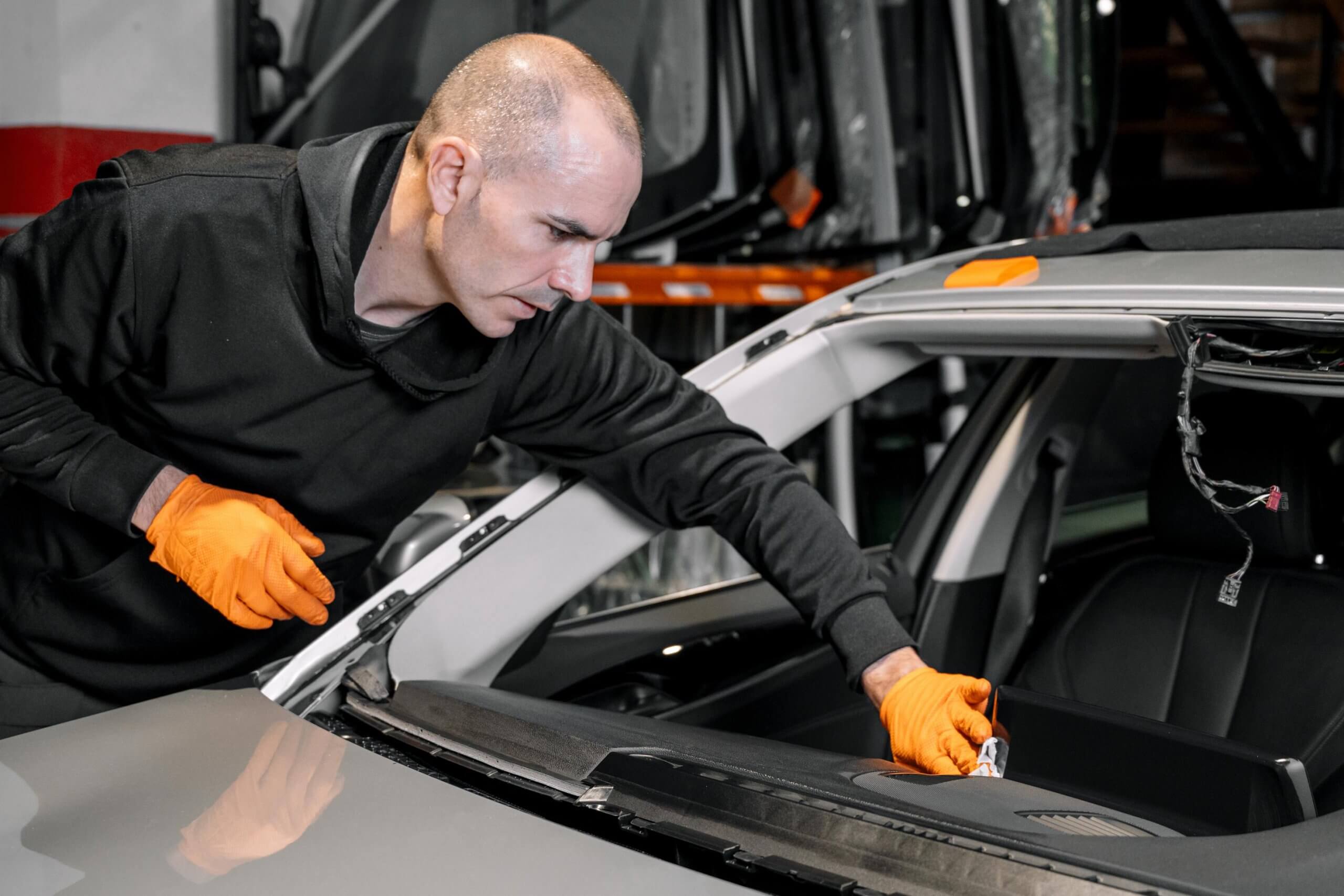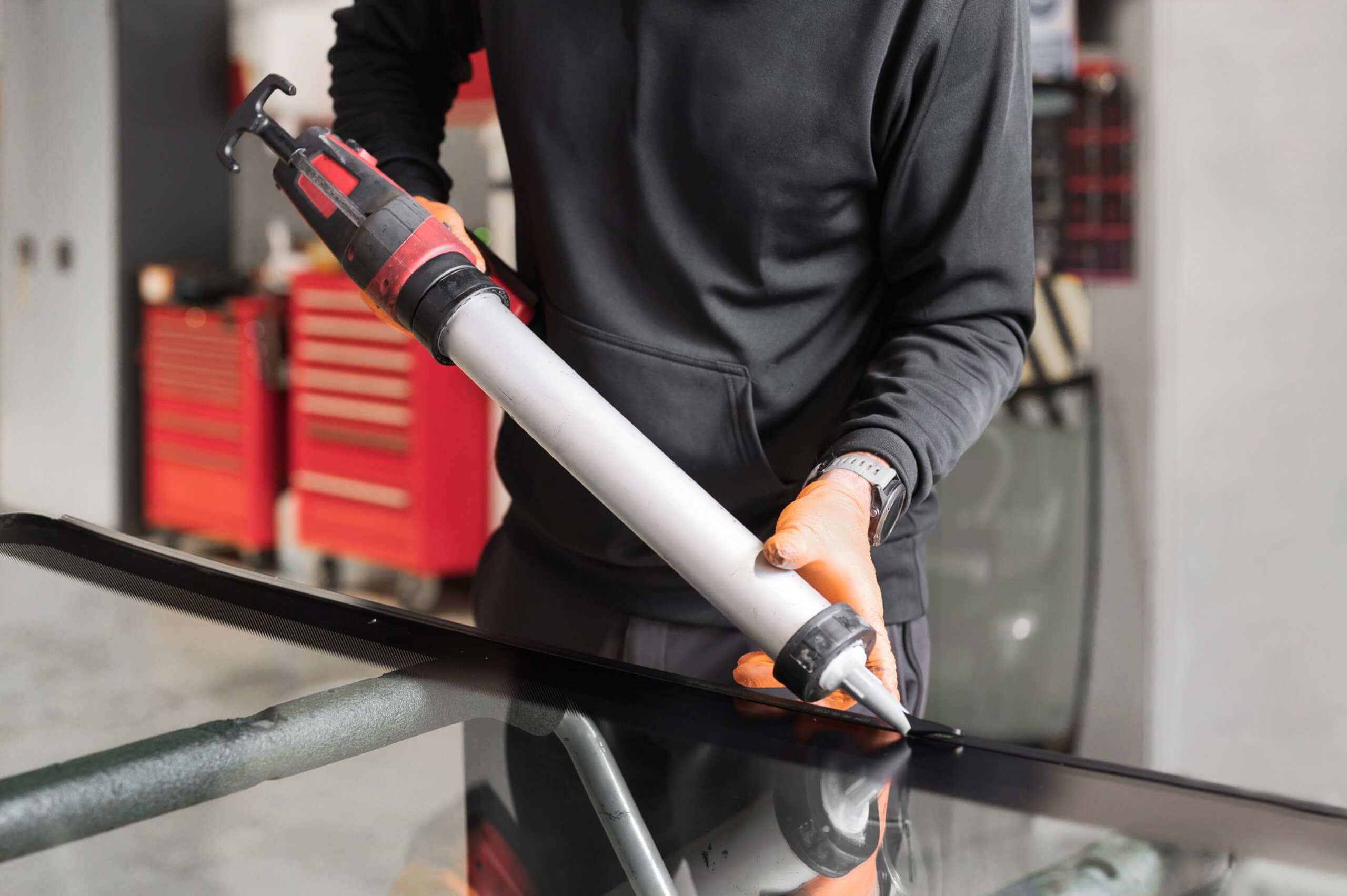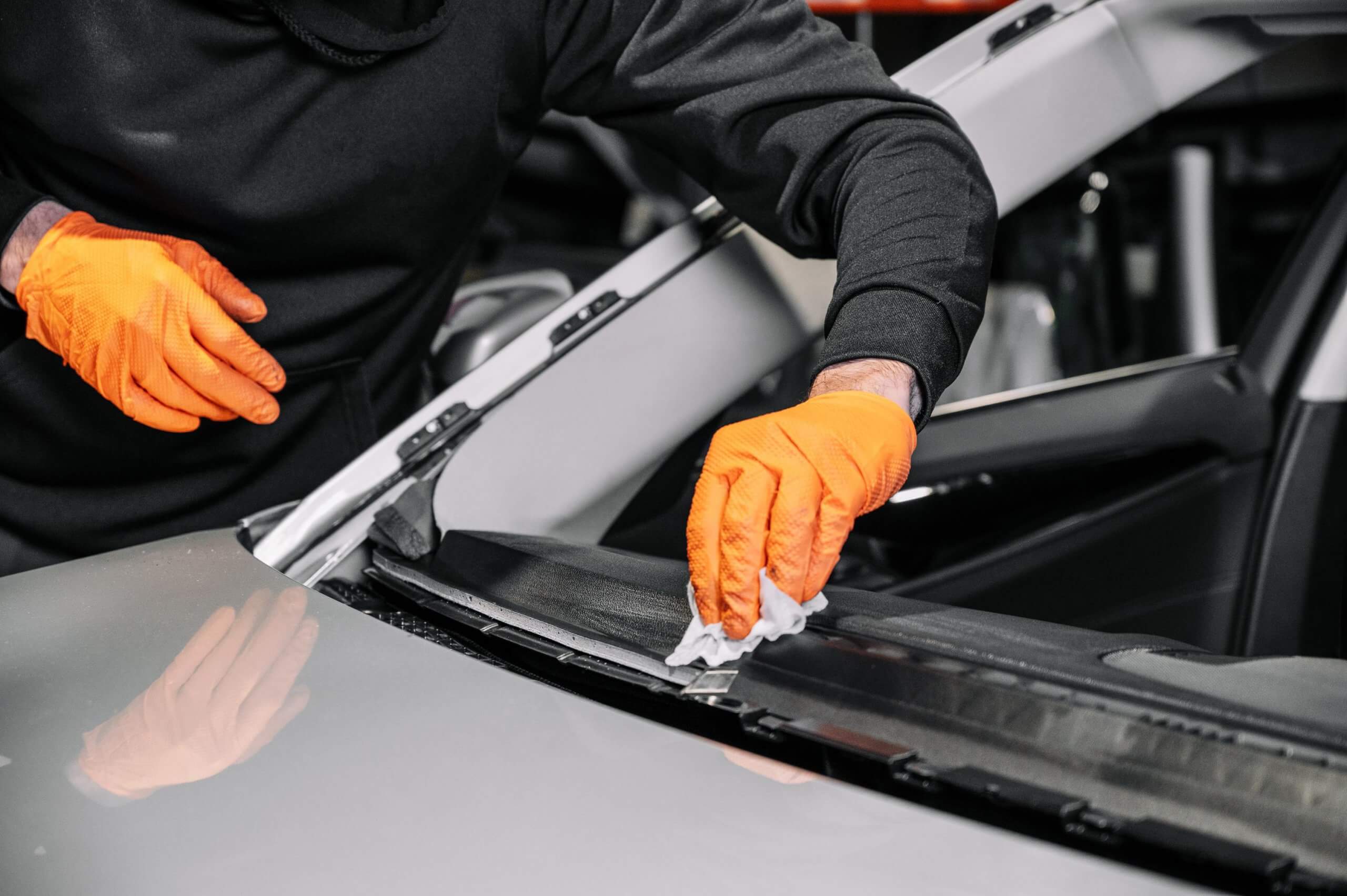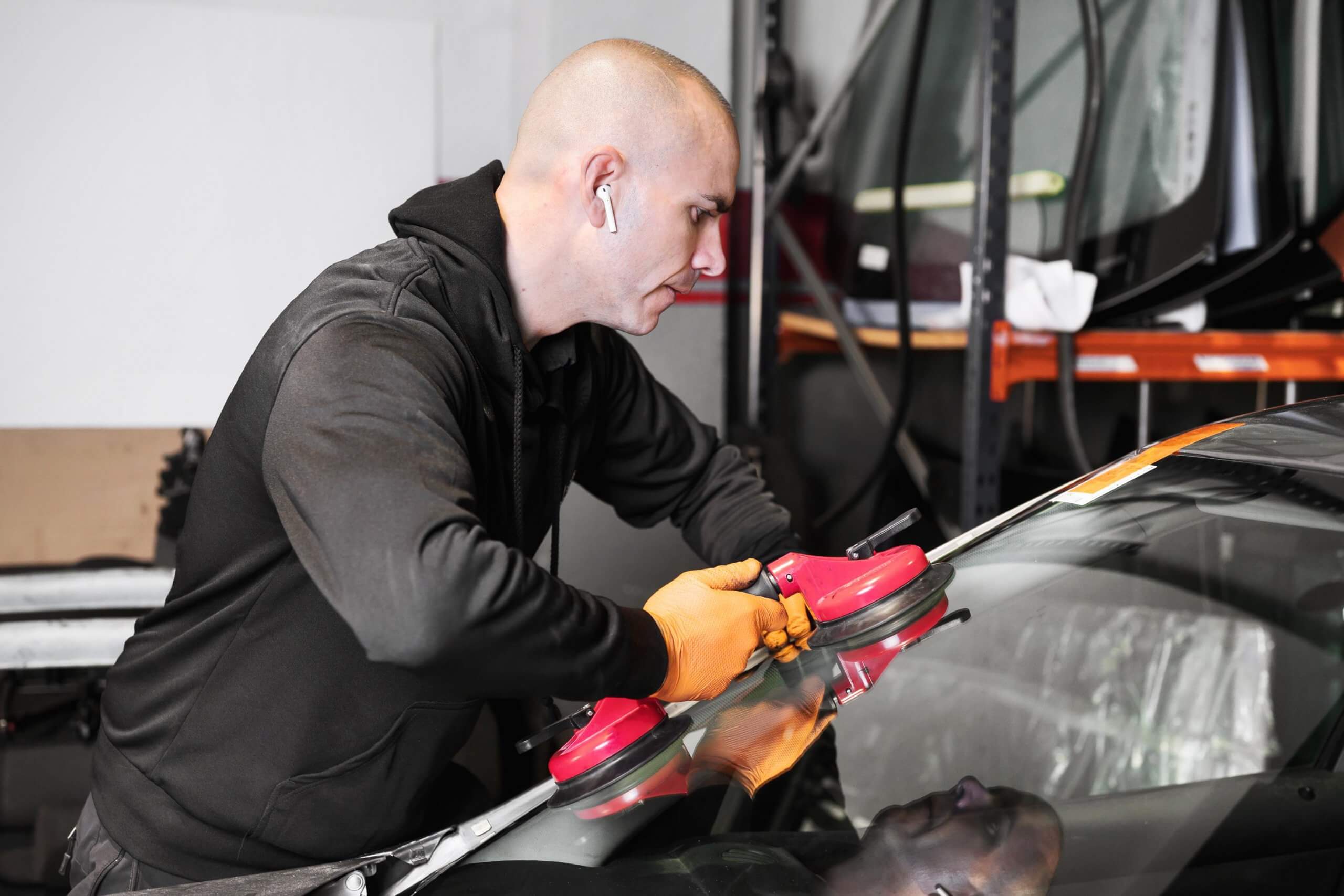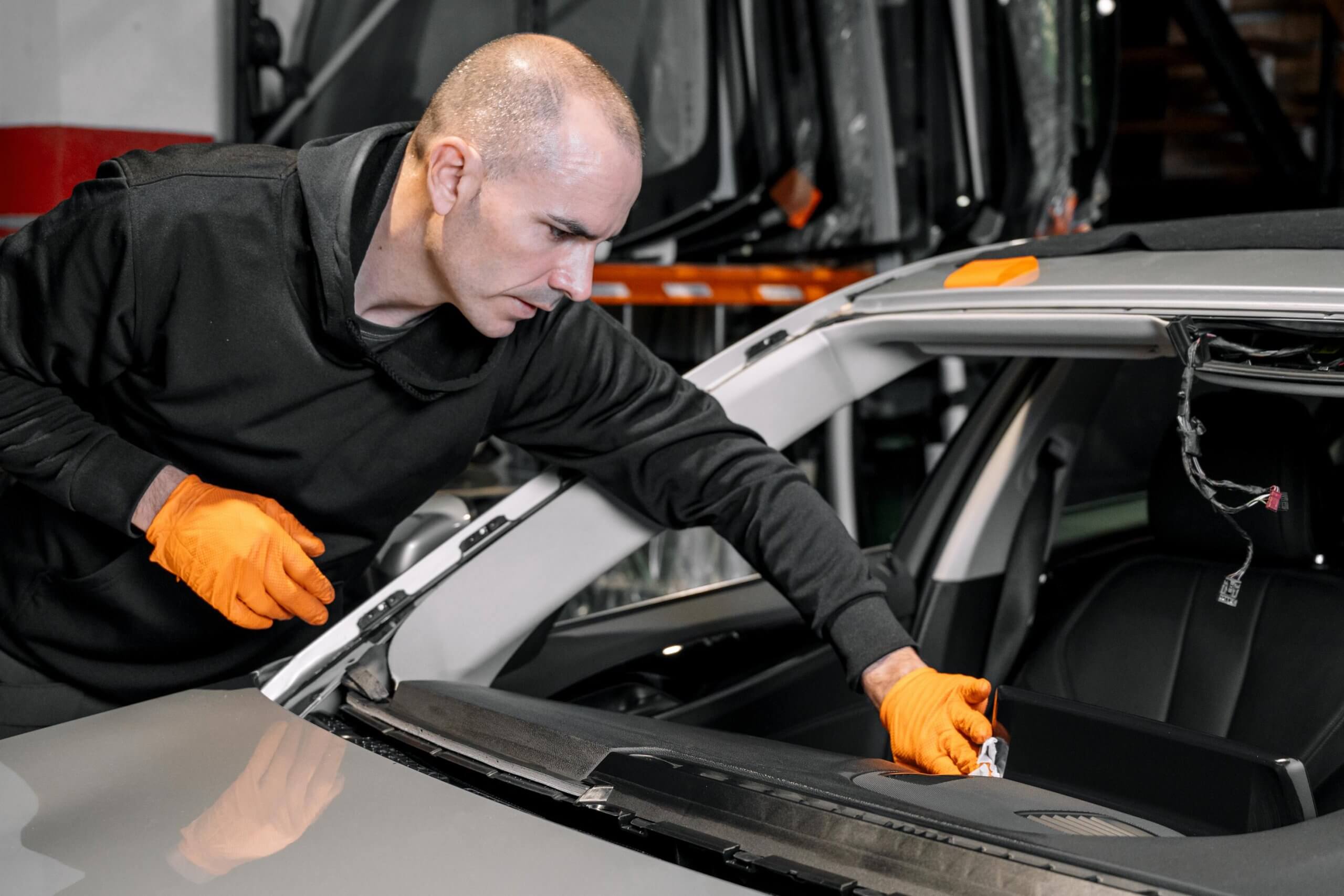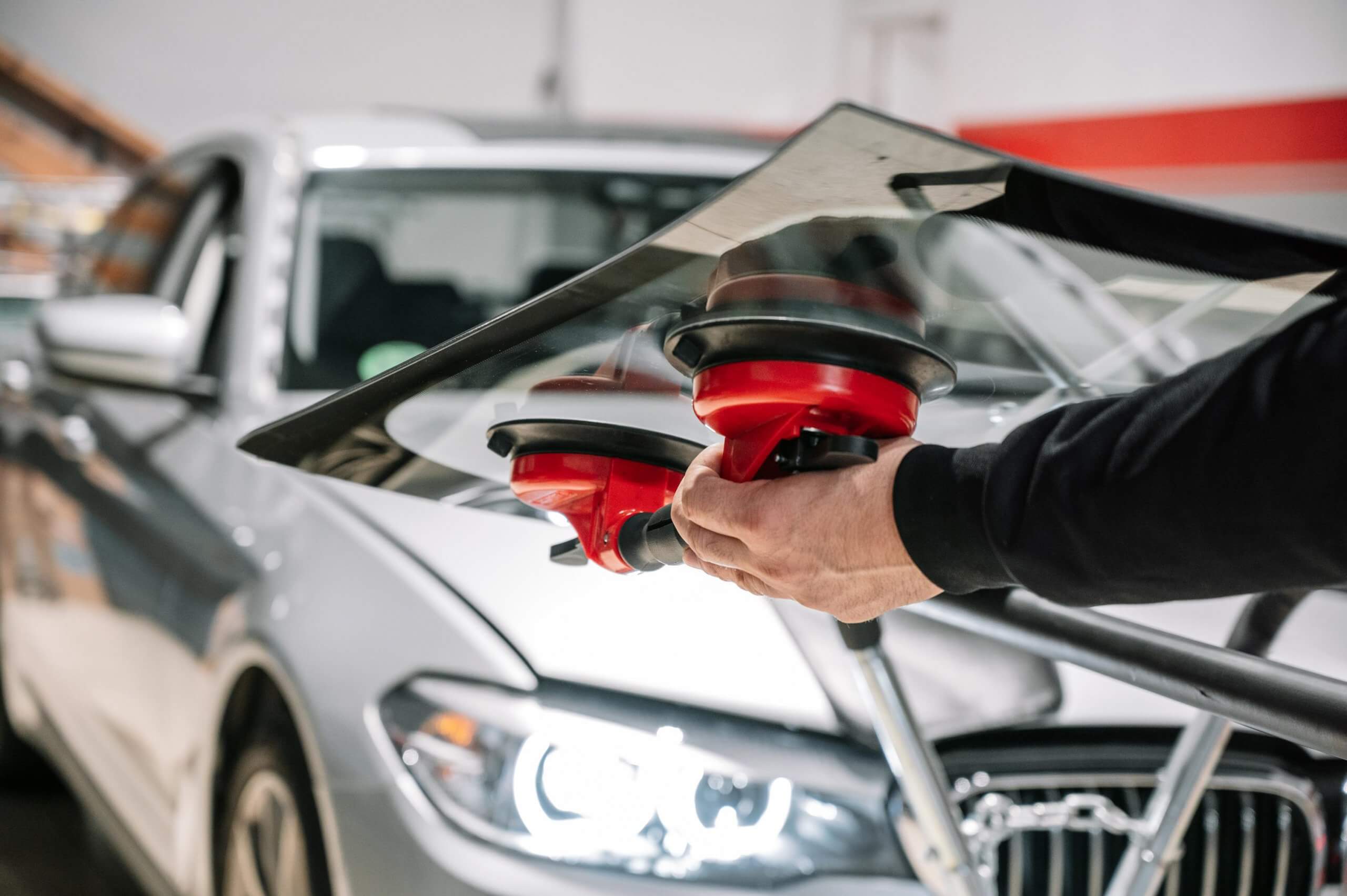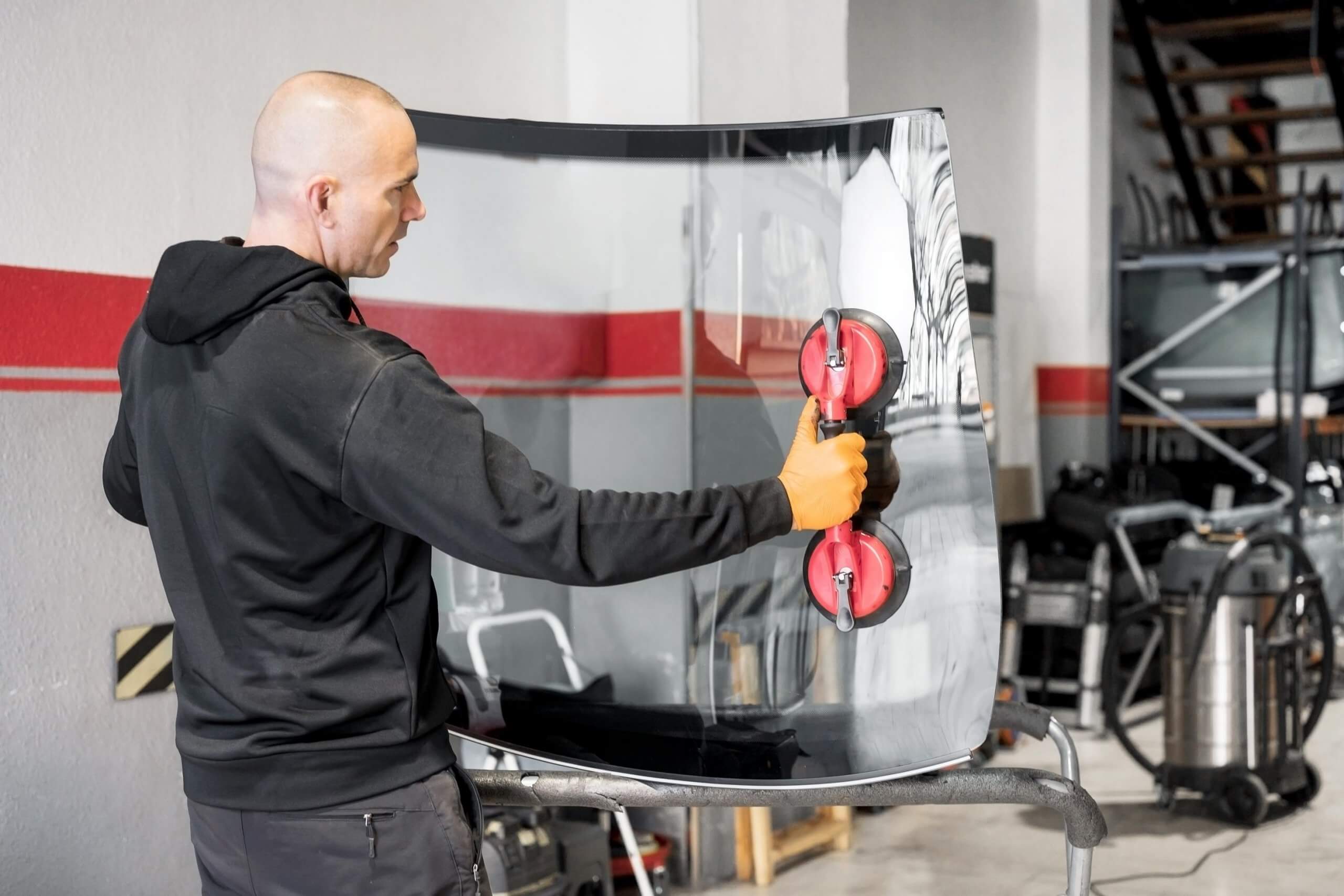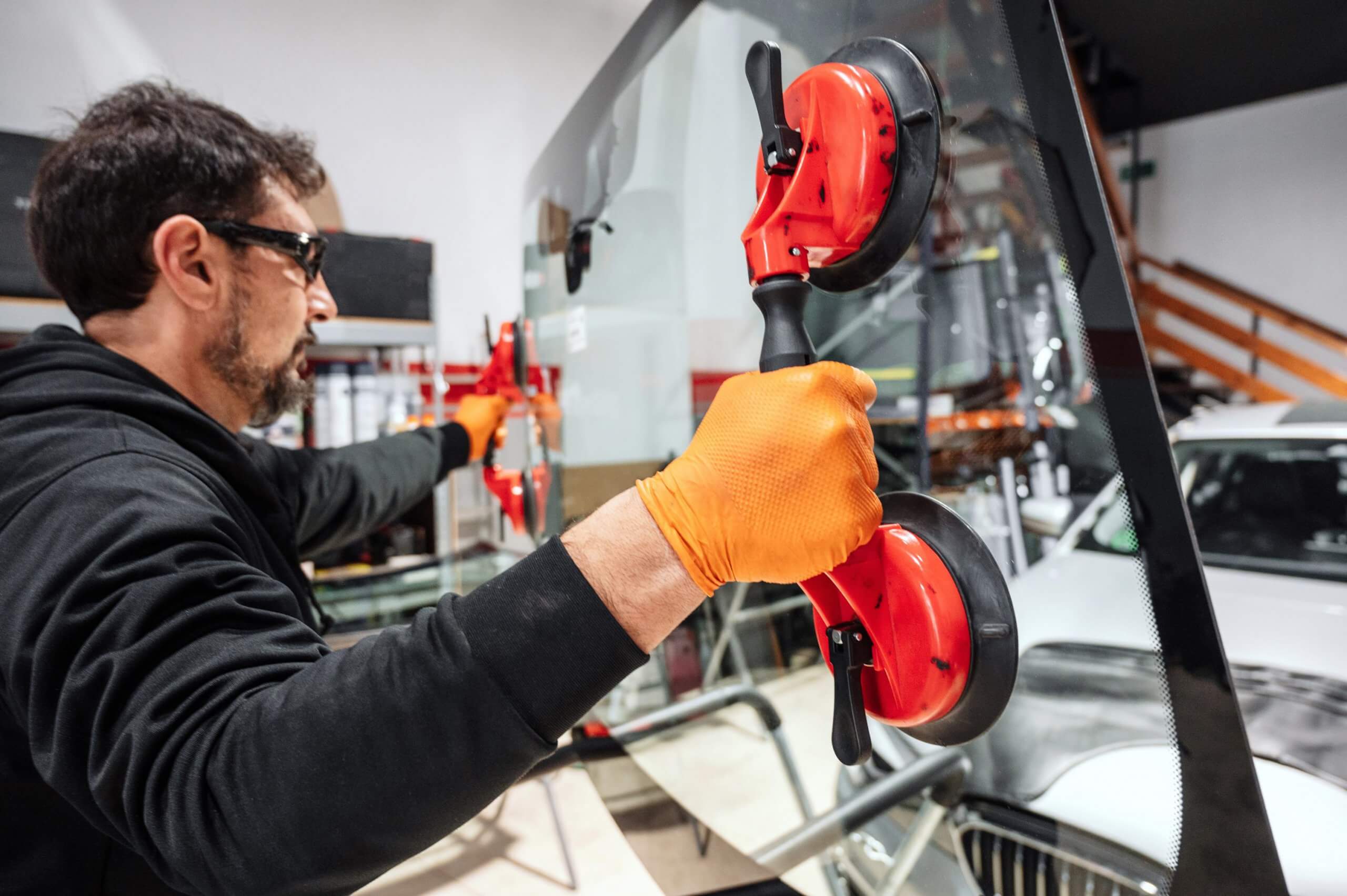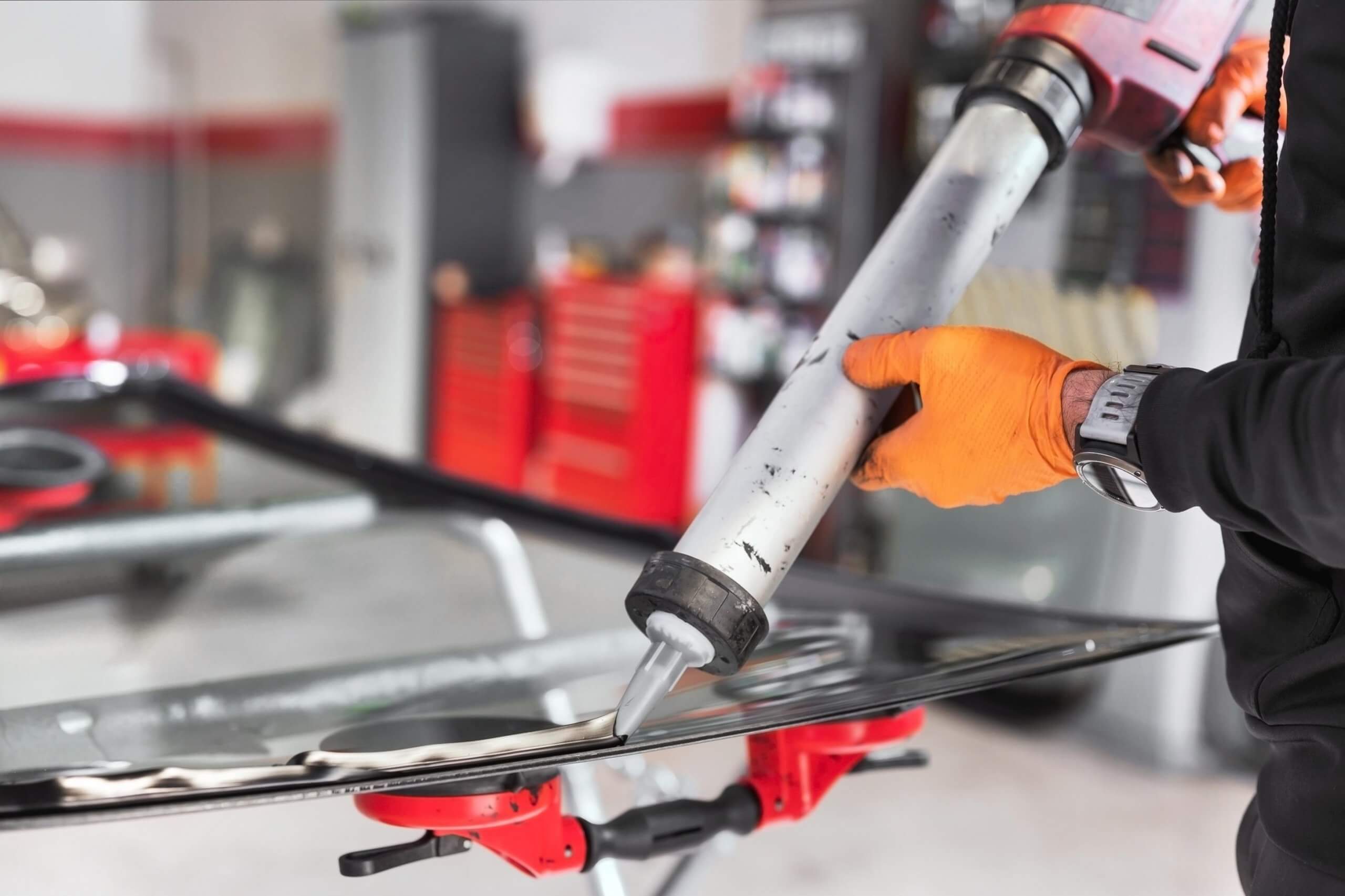
A cracked windshield can be a big hassle, but it’s something you can fix yourself with the right tools and a bit of patience. In this guide, we’ll walk you through how to fix a cracked windshield in simple terms. Whether it’s a small chip or a larger crack, we’ll explain how to make your windshield look as good as new without going to a professional. Let’s get started on making your car safe and clear again!
A clear windshield is crucial for safe driving. It allows you to see the road, other vehicles, and any obstacles. This visibility is essential to make quick decisions while driving and avoiding accidents. A damaged windshield can distort your view, cause glare from the sun or oncoming headlights, and even weaken the overall structure of your car, making it less safe in a collision.
Common Causes of Windshield Cracks
- Road Debris: Small rocks or debris kicked up by other vehicles can hit your windshield and cause chips or cracks.
- Temperature Changes: Rapid changes in temperature, such as from using a defroster on a cold day, can cause the glass to expand or contract quickly and crack.
- Accidents: Collisions, even minor ones, can put stress on your windshield and cause it to crack.
- Poor Installation: If the windshield wasn’t installed correctly, it might be more prone to cracking.
- Structural Weakness: Over time, the frame of your car can weaken, putting extra stress on the windshield and leading to cracks.
Understanding Windshield Cracks
When it comes to windshield cracks, it’s important to know that not all cracks are the same. Different types of cracks can require different solutions. Here’s a breakdown of the most common types of windshield cracks, along with their descriptions, specific lengths that can typically be repaired, and the recommended solutions
Type of Windshield Crack
| Type | Description | Repairable Length | Solution |
| Chip | A small piece of glass is missing from the windshield. | Less than 1 inch | Can often be repaired if it’s small. |
| Star Break | A series of cracks radiating from a central point, resembling a star. | Less than 3 inches | Can be repaired if the cracks are not too long. |
| Bullseye | Circular damage with a central point of impact, resembling a bullseye target. | Less than 1 inch | Can usually be repaired if it’s not too large. |
| Combination | Features characteristics of multiple crack types, like a star break and a chip. | Less than 3 inches for each part | May be repairable depending on size and location. |
| Edge Crack | Crack that starts within 2 inches of the edge of the windshield. | Less than 6 inches | Often requires replacement, especially if it’s long. |
| Floater Crack | Crack that starts in the middle of the windshield away from the edges. | Less than 6 inches | Can sometimes be repaired if not too extensive. |
| Stress Crack | Crack with no point of impact, often due to temperature changes or structural stress. | Less than 6 inches | May require replacement if it continues to grow. |
Assessing the Severity of the Crack
To determine whether a windshield crack can be repaired or if the windshield needs to be replaced, you need to assess the severity of the crack. Here’s how to do it:
- Size: Measure the length of the crack. Small chips and short cracks (usually under 6 inches) can often be repaired. Longer cracks typically require windshield replacement.
- Location: Cracks near the edge of the windshield are more likely to spread and often necessitate replacement. Cracks in the driver’s line of sight can also impair visibility and might require replacement to ensure safe driving.
- Depth: If the crack penetrates through multiple layers of the windshield (laminated glass), it’s more serious and often can’t be repaired.
- Spread: If the crack is actively spreading, it’s usually a sign that the windshield needs to be replaced.
- Type: Refer to the table above to determine the type of crack. Some types, like bullseyes and star breaks, are easier to repair than others, like edge cracks and combination cracks.
By evaluating these factors, you can decide the best course of action to fix your windshield and ensure your vehicle remains safe to drive.

Tools and Materials Needed
To fix a cracked windshield, you’ll need a few specific tools and materials. Here’s a list of what you’ll need and a brief explanation of each item:
- Windshield Repair Kit: These kits typically include everything you need for minor repairs, such as resin, applicator, and curing strips. They are designed for DIY repairs and can be found at most auto parts stores.
- Razor Blade or Utility Knife: Used to clean and scrape off any loose glass or debris around the crack or chip, ensuring a smooth surface for the repair.
- Glass Cleaner: Essential for cleaning the area around the crack to ensure that dirt and grime don’t interfere with the repair process.
- Microfiber Cloth: For cleaning and drying the windshield without leaving any lint or scratches.
- Drill (optional): Sometimes, a small drill is used to create a tiny hole at the end of a crack to prevent it from spreading. This should be done with caution, and only if the instructions of your repair kit recommend it.
- Resin: A special adhesive included in most repair kits. The resin is injected into the crack or chip to bond the glass together.
- Injector or Applicator: Part of the repair kit, used to apply the resin into the crack. It ensures the resin penetrates deeply and fills the damaged area.
- Curing Strips: Thin plastic strips that are placed over the filled crack. They help the resin to cure smoothly and evenly.
- UV Light or Sunlight: The resin in windshield repair kits often needs to be cured using UV light. Some kits come with a UV light, or you can use direct sunlight to cure the resin.
- Safety Glasses and Gloves: To protect your eyes and hands during the repair process. Working with glass and chemicals requires proper safety precautions.
By gathering these tools and materials before you start, you’ll be well-prepared to tackle the repair and ensure a smooth and effective process.
Step-by-Step Repair Guide of Fix Cracked Windshield
Step 1: Clean the Area
Importance of a Clean Surface
- A clean surface ensures that the resin adheres properly to the glass, leading to a more effective and long-lasting repair.
How to Properly Clean the Cracked Area
- Use a glass cleaner and a microfiber cloth to thoroughly clean the windshield around the crack.
- Remove any loose glass or debris with a razor blade or utility knife.
- Dry the area completely with a clean microfiber cloth to prevent any moisture from interfering with the repair.
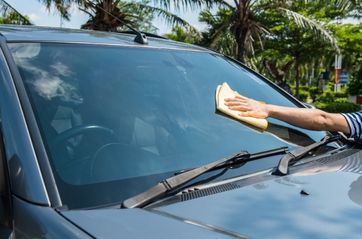

Step 2: Prepare the Repair Kit
Understanding the Components of a Repair Kit
- A typical windshield repair kit includes resin, an injector or applicator, curing strips, and sometimes a drill.
Setting Up the Kit Correctly
- Read the instructions provided with the repair kit carefully.
Assemble the applicator or injector as per the instructions. - Ensure all components are within reach and organized for easy access during the repair process.
Step 3: Apply the Resin
Techniques for Effective Resin Application
- Position the injector or applicator over the crack as directed in the kit instructions.
- Inject the resin into the crack, ensuring it penetrates deeply and fills the entire damaged area.
- For longer cracks, you might need to move the applicator along the crack to ensure even resin distribution.
Ensuring the Resin Fills the Entire Crack
- Apply consistent pressure while injecting the resin.
- Check from different angles to make sure there are no air bubbles trapped in the resin.


Step 4: Cure the Resin
How to Use Curing Strips and UV Light
- Place the curing strips over the filled crack to ensure a smooth finish.
- Use a UV light to cure the resin, or if you don’t have a UV light, position the windshield in direct sunlight.
Time Required for Proper Curing
- Follow the kit instructions for the curing time. Typically, curing with a UV light takes about 5-10 minutes, while sunlight might take 30 minutes to an hour.
- Ensure the resin is fully cured before proceeding to the next step.
Step 5: Finishing Touches
Removing Excess Resin
- After the resin has cured, use a razor blade to carefully scrape off any excess resin from the surface of the windshield.
Polishing the Repaired Area
- Clean the repaired area again with glass cleaner and a microfiber cloth.
- Polish the area to restore clarity and smoothness, making the repair blend in with the rest of the windshield.

By following these steps, you can effectively repair a cracked windshield and restore the structural integrity and clarity of the glass.
Tips for Effective Repair
Best Practices for a Successful Repair
- Work in a Controlled Environment: Perform the repair in a shaded area or indoors to avoid direct sunlight, which can cause the resin to cure prematurely.
- Follow Instructions Carefully: Each repair kit may have slightly different instructions. Follow them meticulously to ensure the best results.
- Take Your Time: Rushing the process can lead to mistakes. Take your time to ensure each step is done correctly.
- Ensure Complete Resin Coverage: Make sure the resin fills the entire crack or chip. Check from different angles to confirm there are no air bubbles.
- Use Quality Tools and Materials: Invest in a good quality repair kit to achieve a durable and long-lasting repair.
How to Handle Different Types of Cracks
- Chips: For small chips, make sure to use a sufficient amount of resin and ensure it penetrates the chip completely. Chips are usually easier to repair and often do not require additional steps.
- Star Breaks: Carefully inject resin into the center and ensure it spreads into all the radiating cracks. Using a slight tapping motion on the windshield can help the resin to flow into the cracks.
- Bullseyes: Like chips, ensure the resin fills the entire bullseye. A slight vacuum might be necessary to remove trapped air.
- Combination Cracks: These can be tricky because they contain multiple types of damage. Focus on filling each part of the crack properly, starting with the deepest or most central point and working outward.
- Edge Cracks: These cracks are more challenging due to their location. If the crack is less than 6 inches, follow the standard repair steps. For longer cracks, it’s often better to consult a professional as they might recommend a replacement.
- Floater Cracks: These cracks start in the middle of the windshield. Ensure even resin distribution and check the crack’s depth before starting. If it’s extensive, consider professional help.
By following these tips and being mindful of common mistakes, you can effectively repair a cracked windshield and ensure a safe and clear view while driving.
Maintenance Tips to Avoid Future Cracks
Regularly Check and Maintain Wiper Blades:
- Inspect your wiper blades for wear and tear, and replace them every six months to a year. Damaged wipers can scratch the windshield, leading to potential cracks.
- Ensure the wiper fluid is filled and the system is working correctly to keep the windshield clean and free from obstructive dirt and debris.
Avoid Using Harsh Chemicals:
- Clean your windshield with products specifically designed for automotive glass. Avoid using household glass cleaners that contain ammonia, which can damage the glass and the surrounding sealant.
- Regularly clean the windshield to remove any substances that could cause damage, such as bird droppings, sap, and road salt.
Address Chips and Cracks Immediately:
- Even small chips and cracks can quickly worsen with changes in temperature and additional stress. Use a windshield repair kit to fix minor damage as soon as it occurs, or consult a professional for larger repairs.
By following these scientifically-backed tips, you can help ensure your windshield remains intact and clear, extending its lifespan and maintaining the overall safety and integrity of your vehicle.
How to Prevent Windshield Damage
Driving Practices:
- Maintain Safe Following Distance: Keep a safe distance from the vehicle in front of you, especially on highways. This reduces the chance of debris being kicked up and hitting your windshield.
- Avoid Construction Zones: If possible, avoid driving through construction zones where debris and loose gravel are common.
- Slow Down on Gravel Roads: If you must drive on gravel roads, reduce your speed to minimize the risk of stones being thrown up by your tires or other vehicles.
Parking Tips:
- Choose Covered Parking: Whenever possible, park your car in a garage or under a carport to protect it from falling debris, tree branches, and other hazards.
- Avoid Direct Sunlight: Prolonged exposure to direct sunlight can cause your windshield to expand and contract, leading to stress cracks. Park in the shade or use a sunshade to protect your windshield.
- Steer Clear of Large Trees: Avoid parking under large trees that can drop branches or sap onto your windshield, which can cause damage.
Seasonal and Environmental Protective Measures
Winter Care:
- Use a Windshield Cover: In snowy or icy conditions, use a windshield cover to protect the glass from ice buildup, which can cause cracks when scraped off.
- Defrost Gradually: Avoid sudden temperature changes by defrosting your windshield gradually. Use the car’s heater to warm the glass slowly.
Summer Care:
- Park in the Shade: During hot weather, park in shaded areas or use a sunshade to prevent the windshield from overheating and expanding.
- Avoid Cold Water: Don’t pour cold water on a hot windshield. The sudden temperature change can cause the glass to crack.
During Storms:
- Seek Shelter: In the event of a hailstorm, try to find shelter for your vehicle. Hail can cause significant damage to your windshield.
- Use a Car Cover: If you know a storm is coming and you can’t park indoors, use a thick car cover to provide an extra layer of protection.
By following these maintenance tips and being mindful of how you drive and park your vehicle, you can significantly reduce the risk of windshield damage and prolong the life of your windshield.

Choosing the Right Windshield Replacement
Types of Windshield Glass Available
OEM (Original Equipment Manufacturer):
- Definition: OEM windshields are made by the same manufacturer that produced the original windshield installed in your car at the factory.
- Advantages: These windshields are designed to meet the exact specifications of your vehicle, ensuring a perfect fit and maintaining the original appearance and functionality.
- Disadvantages: OEM windshields are typically more expensive than aftermarket options.
Aftermarket:
- Definition: Aftermarket windshields are produced by companies other than the original manufacturer.
- Advantages: They are usually less expensive than OEM windshields and can offer a similar quality.
- Disadvantages: The fit and finish might not be as precise as OEM windshields, and the quality can vary significantly between manufacturers.
Importance of Choosing Quality Materials for Replacement
Choosing a high-quality windshield is crucial for several reasons:
- Safety: A high-quality windshield ensures your vehicle’s structural integrity and proper airbag deployment, contributing to overall safety.
- Durability: Quality materials are more resistant to chips, cracks, and other forms of damage, extending the lifespan of the windshield.
- Visibility: High-quality glass provides better clarity and reduces glare, enhancing your driving experience.
- Aesthetic: A properly fitted, high-quality windshield maintains the vehicle’s original appearance.
Why Choose High Tech Auto Glass for Windshield Repairs
Expertise and Experience
- High Tech Auto Glass boasts a team of highly trained professionals with years of experience in windshield repair and replacement. Our technicians are certified and use the latest techniques to ensure your windshield is repaired to the highest standards.
Advanced Technology
- We utilize cutting-edge technology and equipment for all our windshield repairs. Our repair kits are designed with advanced resins and applicators to provide a seamless and durable repair, restoring the structural integrity of your windshield.
High-Quality Materials
- At High Tech Auto Glass, we believe in using only the best materials. Our repair kits include premium-quality resin and tools, ensuring a long-lasting fix that can withstand various weather conditions and stresses.
Convenient and Efficient Service
- We understand that a cracked windshield is an inconvenience. That’s why we offer fast and efficient service to get you back on the road as soon as possible. Our mobile repair units can even come to your location for added convenience.
Affordable Pricing
- Quality repair services shouldn’t break the bank. High Tech Auto Glass offers competitive pricing on all our services. We provide clear, upfront pricing with no hidden fees, ensuring you get the best value for your money.
Customer Satisfaction Guarantee
- Your satisfaction is our top priority. We stand behind our work with a customer satisfaction guarantee. If you’re not completely satisfied with the repair, we’ll make it right.
Conclusion
Ensuring the integrity and clarity of your vehicle’s windshield is crucial for both safety and appearance. Whether you opt for repairs or replacement, choosing a reputable service provider like High Tech Auto Glass ensures you receive top-quality materials, skilled craftsmanship, and reliable customer support. By following maintenance tips to prevent future damage and selecting the right type of glass for replacement, you can prolong the life of your windshield and maintain optimal visibility while driving.
For those living in Phoenix, Scottsdale, or Tempe, finding reliable windshield replacement services is essential. High Tech Auto Glass offers comprehensive services for these areas, ensuring that your windshield replacement Phoenix, windshield replacement in Scottsdale, and windshield replacement in Tempe is handled with the utmost professionalism and quality.
In addition to standard vehicle windshields, we also specialize in commercial windshield replacement and RV windshield replacement. This means no matter what type of vehicle you drive, we have the expertise and equipment to handle your needs.
Remember, prioritizing professional service and quality materials is key to ensuring your vehicle remains safe and looks its best on the road. Trust High Tech Auto Glass for all your windshield repair and replacement needs, ensuring clear visibility and safety for all your journeys.
Frequently Asked Questions
How do I know if my windshield crack can be repaired or if it needs to be replaced?
If the crack is shorter than 6 inches, away from the edges, and not in the driver’s line of sight, it can usually be repaired. Longer or more complex cracks often require a replacement.
What should I do if the crack starts spreading while I'm driving?
Try to drive gently and avoid bumps. Park your car in a safe place as soon as possible and contact a professional repair service like High Tech Auto Glass to assess and fix the damage.
Can I wash my car immediately after a windshield repair?
It’s best to wait at least 24 hours before washing your car to allow the resin to fully cure and ensure a strong bond.
What if the repair resin doesn’t fill the crack completely?
If the resin doesn’t fill the crack entirely, it might be due to trapped air bubbles or incorrect application. Try reapplying the resin and use a slight tapping motion on the glass to help it spread evenly.
How can I prevent my windshield from cracking in the future?
Avoid driving too close to other vehicles, especially trucks. Park in shaded or covered areas to avoid temperature extremes and inspect your windshield regularly for small chips that can be repaired before they turn into cracks.
Why is there still a visible mark after the repair?
While repairs can restore the structural integrity of the windshield, a faint mark might remain where the crack was. This is normal and usually doesn’t affect visibility or safety.
Is it safe to drive immediately after a windshield repair?
Yes, it is generally safe to drive immediately after the repair, but avoid rough roads and washing the car for 24 hours to ensure the resin cures properly.
Can I fix a crack in my windshield myself?
Yes, you can fix a crack in your windshield yourself if it’s a small chip or crack. There are DIY repair kits available that include everything you need to make the repair. These kits usually come with resin and an applicator to fill the crack. However, if the crack is large, extends to the edges, or obstructs your view, it’s better to have it repaired by a professional.
Can you repair a cracked windshield without replacing it?
Yes, you can repair a cracked windshield without replacing it, but it depends on the size and location of the crack. Small chips and cracks, usually under 6 inches, can often be repaired with special resin that fills and seals the damage. This type of repair restores the structural integrity of the windshield and can prevent the crack from spreading. However, larger or more severe cracks may require a full replacement to ensure your safety.

